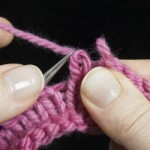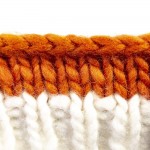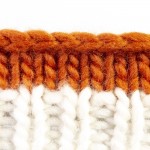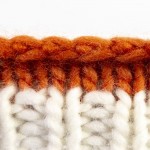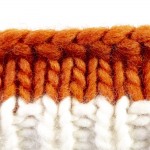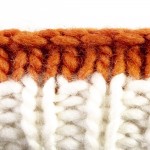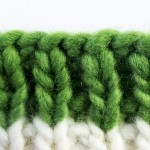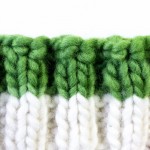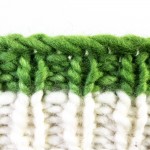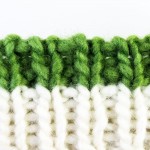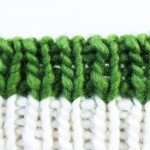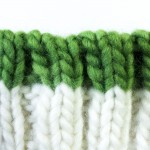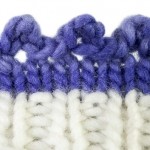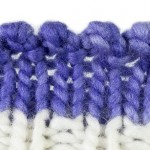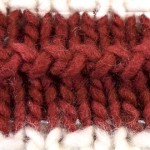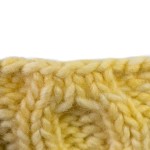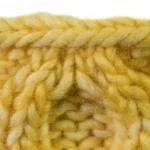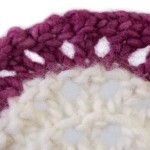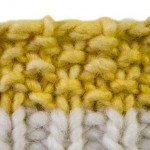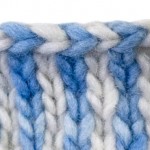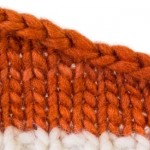Bind-Off Tips and Tricks
Neaten the Last Stitch of Your Bind-Off (Flat Knitting)
bind-offs
Neaten the Last Stitch of Your Bind-Off (Round Knitting)
Every single time you’re binding off in the round, use this trick to make the join completely disappear. No one will be able to tell where you started and where you stopped.
Undo Your Bind-Off Stitches
bind-offs
Standard Bind-Offs
Standard Bind-Off
bind-offs
Suspended Bind-Off (Variation)
bind-offs
Decrease Bind-Off
bind-offs
Crochet Bind-Off
bind-offs
Elastic Bind-Off
bind-offs
Icelandic Bind-Off
bind-offs
Braided Rib Bind-Off
bind-offs
EZ Sewn Bind-Off
This is a very stretchy sewn bind-off that’s good for beginners. This was famously Elizabeth Zimmerman’s favorite stretchy bind-off (which is what the “EZ” stands for).
Stretchy/Ribbed Bind-Offs
2×2 Invisible Ribbed Bind-Off
This bind-off is a stretchy and invisible way to bind-off for 2×2 rib. It is not easy to remember but it is worth doing.
In-Pattern Bind-Off for 1×1 Rib
bind-offs
Jeny’s Surprisingly-Stretchy Bind-Off (JSSBO) for 1×1 Rib
A fairly easy and very stretchy bind-off that is great for 1×1 rib. You will not be disappointed with its stretch or sturdiness. Leaves a visible edge.
Jeny’s Surprisingly Stretchy Bind-Off (JSSBO) for 2×2 Rib
This 2×2 bind-off is very stretchy, with moderate-to-high bounce back, which means it won’t stay stretched out but rather it will bounce back into shape nicely.
Yarnover Bind-Off
bind-offs
Latvian Bind-Off
bind-offs
Invisible Ribbed Bind-Off for 1×1 Rib
The Invisible Ribbed Bind-Off is a great, advanced stretchy bind-off. It is a sewn bind-off that blends invisibly into 1×1 rib. Good for binding off toe-up socks. Learning it will help you learn Kitchener stitch as well.
Tubular Bind-Off for 1×1 Rib
The Tubular Bind-Off is a stretchy, advanced bind-off for 1×1 rib that is totally invisible. The ribbed stitches continue over the top edge and onto the other side. Requires a tapestry needle.
Kitchener Double-Rib Bind-Off
If you want a 2×2 ribbed bind-off that’s stretchy and truly invisible, look no farther than the Kitchener Double-Rib Bind-Off. The bind-off stitches blend into the 2×2 ribbing perfectly, making it look like the edge is hemmed.
Cable Bind-Off for 1×1 Rib
bind-offs
Cable Bind-Off for 2×2 Rib
bind-offs
Decorative Bind-Offs
Knit 2 Together Bind-Off
bind-offs
I-Cord Bind-Off
bind-offs
Edging Bind-Off
bind-offs
Hemmed Edge Bind-Off – Purl or Picot
bind-offs
Frilled Standard Bind-Off
bind-offs
Frilled Decrease Bind-Off
bind-offs
Ruffle Bind-Off
bind-offs
Picot Point Bind-Off #1
bind-offs
Picot Point Bind-Off #2
bind-offs
Seaming Bind-Offs
Russian Grafting (Blog)
This is a really easy and fast way to close live stitches, without using a tapestry needle. It just requires a crochet hook and a secret move at the beginning to get things set up right.
How to Have Great Tension on Kitchener Stitch
It is easy to do Kitchener stitch and have the seam come out too loose or too tight. Follow these tension tips so that your Kitchener stitch bind-off is invisible, stretchy, and blends in perfectly with the surrounding stitches.
How to Undo Kitchener Stitch
Undoing Kitchener stitch can be time-consuming and frustrating. This video shows two techniques for undoing Kitchener stitch so that if your bind-off isn’t perfect, you take it out without stress.
How to Do Kitchener Stitch in the Round
Kitchener stitch in the round can be fiddly, especially if you are using Magic Loop. This video shows you how to overcome all the tricky bits so you get a perfectly seamless continuous tube every time.
How to Do Kitchener Stitch on 1×1 Rib
Kitchener stitch on 1×1 rib will end up with a jog in the stitches unless you prepare your provisional cast-on exactly right. This videos shows each step to setting up and doing Kitchener stitch correctly on 1×1 rib without any headaches.
How to Do Kitchener Stitch Without a Tapestry Needle
You might not have a tapestry needle handy when you get to the bind-off on your top-down socks. This video shows you how to do Kitchener stitch using a spare knitting needle instead of a tapestry needle so you can wear your top-down socks without waiting another minute!
NEW! Complete Video Guide to Seaming Your Knitting with Kitchener Stitch
Russian Grafting (Bind-Offs Class)
Russian Grafting is a clever alternative to Kitchener stitch. It uses a crochet hook to seam up two live edges of knitting without ever having to get out your tapestry needle. It also creates a decorative, criss-crossed finish.
Japanese Bind-Off
bind-offs
ZigZag (Ancient Greek) Bind-Off
bind-offs
Three-Needle Bind-Off
bind-offs
Three-Needle I-Cord Bind-Off
bind-offs
How to Do Kitchener Stitch Without Fear
Most written instructions for Kitchener Stitch are too complex to follow. This video teaches you to seam up your knitting with Kitchener stitch so you can easily close up sock toes and afterthought heels with confidence.
Kitchener Stitch for Garter Stitch
bind-offs
Firm (Non-Stretchy) Bind-Offs
Bind-Offs for Lace
Jeny’s Surprisingly-Stretchy Bind-Off (JSSBO) for 1×1 Rib
A fairly easy and very stretchy bind-off that is great for 1×1 rib. You will not be disappointed with its stretch or sturdiness. Leaves a visible edge.
Frilled Standard Bind-Off
bind-offs
Picot Chain Bind-Off
bind-offs
Bind-Offs for Garter Stitch
Icelandic Bind-Off
bind-offs
EZ Sewn Bind-Off
This is a very stretchy sewn bind-off that’s good for beginners. This was famously Elizabeth Zimmerman’s favorite stretchy bind-off (which is what the “EZ” stands for).
Latvian Bind-Off
bind-offs


